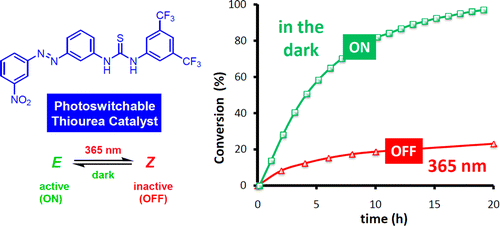A series of azobenzene-based thiourea catalysts have been developed with the aim of achieving control over the catalytic activity by the use of light. The conceptual design of these systems relies on the inactivation by means of intramolecular hydrogen bonding, only likely to take place in one of their isomeric forms. After fine structure modulation of the catalyst a substantial difference in activity has been observed between the irradiated and the nonirradiated reaction. Furthermore, the system allowed in situ manipulation of the catalyst activity during the course of a given experiment.
